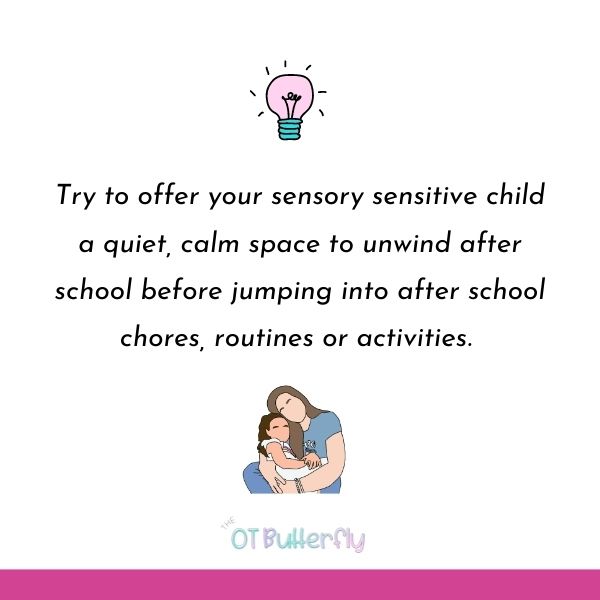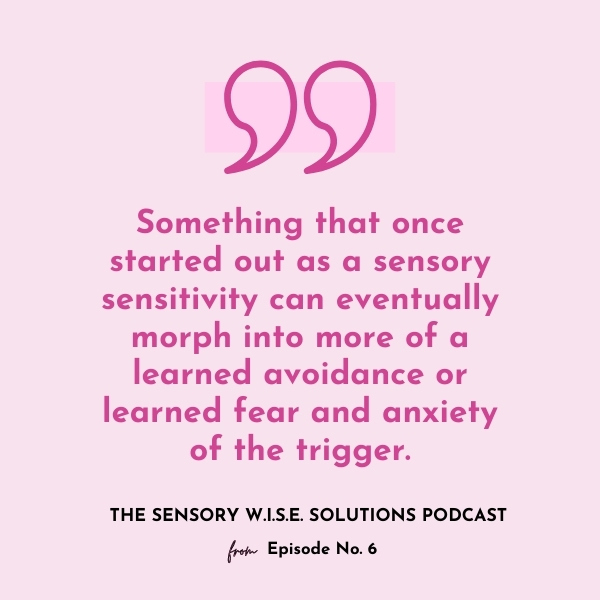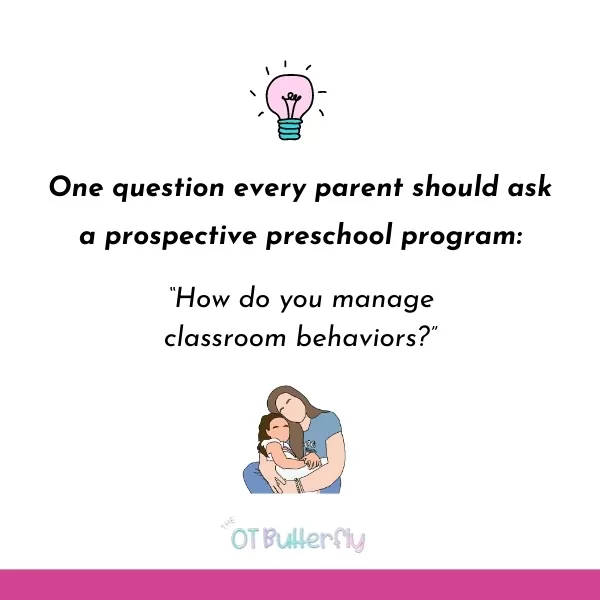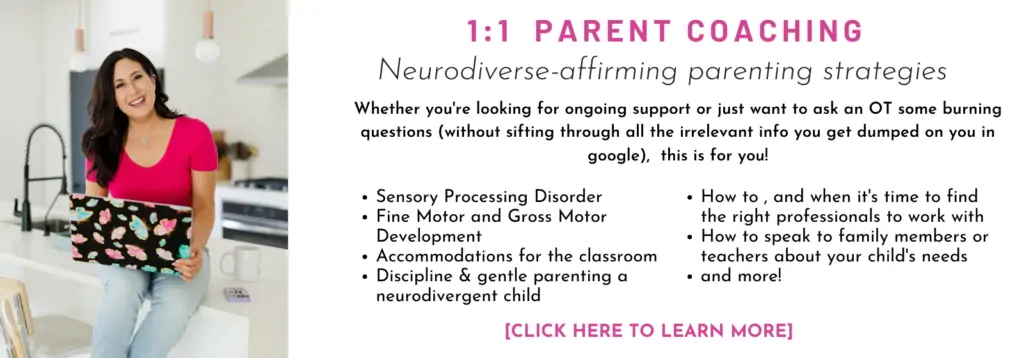Get your FREE sensory profiles cheat sheet >>click here<<
Sensory Sensitivity Signs in children
Click here to view the transcript for “Sensory Processing Disorder: Sensory Sensitive Profile”
Does your child cover their ears at loud sounds, hate messy play, or is a picky eater? Do they also seem to have really intense tantrums (that are really meltdowns)? If so, they may have sensory sensitivities. Not sure what that is? Keep reading to find out what sensory sensitivity is.
Let’s talk about the sensory profile that impacts me the most personally and one that I consider myself an expert in in my practice: a LOW sensory threshold, also known as being sensory over responsive, sensory sensitive, or you might also hear it referred to as sensory sensitive or a sensory avoider.
What is a sensory threshold?
So when we talk about different sensory profiles, we are talking about sensory thresholds. A sensory threshold informs us how much input a person’s nervous system can tolerate or needs in order to feel regulated.
As a fun illustration, I like to use cups to represent sensory thresholds.
A low sensory threshold is like having a small sensory cup.
A child who is sensory over responsive, sensory sensitive or has a low sensory threshold has a small sensory cup: it can’t hold too much liquid before overflowing.
Imagine that the liquid and drips into the sensory cup is all of the sights, smells, sounds, feelings (basically sensory input) you encounter.
A completely empty sensory cup OR an overflowing sensory cup is when you’d see a dysregulated child.
It’s best to aim for a cup that’s filled to the Goldie-Locks level (not too full, not too empty).
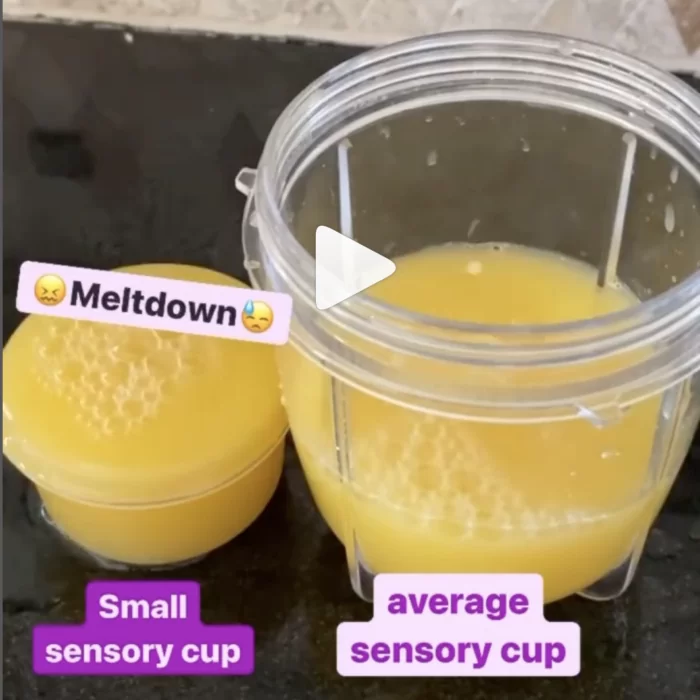
What are signs of sensory sensitivity?
So what exactly does it look like to have a low threshold or a small sensory cup aka being sensory sensitive?
This means that a child can only tolerate limited amounts or less intense sensory inputs than others.
When the cup overflows (from too much sensory input), that’s when you hit a sensory meltdown, or they go in to fight/flight or freeze mode and can appear dysregulated.
So children with a low sensory threshold can’t tolerate much input at all. They reach their maximum capacity much faster and more often than neurotypical people who have a bigger cup.
They often experience the world as too loud, too fast, too hard, too messy, too scary.
The important thing to know as parents is that it’s how the person perceives (through the way their brain processes it) the input that matters most. What’s considered loud to your child may not be loud at all to you.
Maybe the sound of a sneeze is one drop in your sensory cup but it’s 5 drops in your child’s cup because to them, it’s painfully loud.
To a child with a small sensory cup, the seams in socks or waistbands on their underwear can actually be painful and add 10 drops to their cup, but we don’t even notice it.
Some of the most common tasks that are hard for children with small sensory cups include:
- Being sensitive to the feeling of fabrics in clothes, socks or shoes.
- Being sensitive to loud sounds or overstimulated from busy environments (like a lot of people talking).
- Being sensitive to smells or tastes (picky eaters)
- Being sensitive to touch, which could be showcased in their avoidance of: messy play, getting their hair brushed, hair cut, hair washed, brushing their teeth, really all of the grooming activities.
- Being sensitive to movement (gets carsick easily or are afraid of swings, bikes, scooters, escalators)
- Being sensitive to the internal sense- interoception, (low pain tolerance, always hot or cold, complains of aches and pains, not noticing bathroom cues)
Why school is so hard for sensory sensitive kids
Once you understand the small cup analogy, you’ll quickly see how an after school meltdown can happen seemingly “out of nowhere” but really, it’s an accumulation of drops into their tiny sensory cup from the day, especially at school.
Let’s think about it. Let’s imagine a typical, traditional standard classroom and how much sensory drops it can add to your child’s cup.
- Bright fluorescent lights, lots of bright colors or any clutter from toys and crafts hanging around.
- Sounds of: laughing, crying, cheering, clapping, chairs scraping the ground as they scoot in, alarms, dismissal bells, singing, announcements or toilets flushing.
- The smells of: perfume, food, wet ground/grass if it rains.
- The touch from: any clothes they’re wearing, unintentional bumps from peers standing or sitting next to them, messy glue or paint crafts, water play or sensory play, sand from the sandbox, wet shoes or pants from the rain… I could go on and on.
All the chaos and multisensory input from the playground, the lunch room… it’s really a lot when you think about it.
Their nervous system is at maximum capacity and primed for a meltdown by the time you pick them.
Whether it’s the wrong color cup, the wrong chair, the way you handed them the already peeled banana but they wanted it unpeeled… it sends them into a huge meltdown or dysregulated spiral and you’re thinking “What? Why are they freaking out about this?”
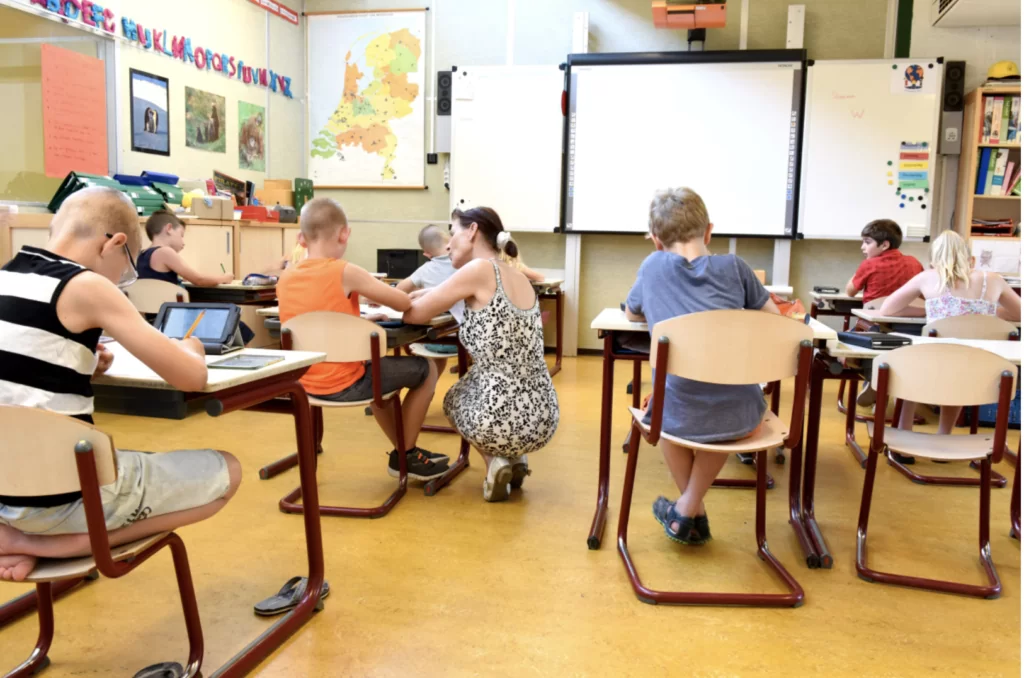
But in reality… it’s not about the way you peeled the banana or giving them the wrong cup…. It’s the fact that they are completely overstimulated from school and this was what overflowed their sensory cup.
Sensory Sensitivity and Anxiety
One important thing to consider when you’re thinking about a child who has sensory sensitivities is that something that once started out as a sensory sensitivity can eventually morph into more of a learned avoidance or learned fear and anxiety of the sensory trigger.
So let’s say your child has sensory sensitivities as a toddler and the texture of avocados made them gag.
Every time you wanted your child to try avocado, it would end in them crying or having a big reaction.
Eventually, over time, your child’s brain will store that information, the information that “avocado = yucky texture = gag = cry” and then it will create a shortcut to the path from avocado = crying.
Then the brain starts to learn and anticipate the negative reaction from avocados and instead of actually waiting until the avocado is in the mouth, the brain will associate the look of the avocado, maybe the plate it was served on or the spoon it was used on… or even generalize other foods that look the same… and it will associate these with something negative (as a protective response).
What you have left there then is an anxiety or a learned fear of avocados.
So now the child might cry, throw, have a full on huge meltdown or reaction just at the sight or mention of avocados.
This learned avoidance and fear response stemming from an original sensory sensitive is common and can happen for any of the sensory sensitivities your child experiences.
Their brain takes the sensory trigger (the thing that adds a ton of drops to their cup) and sets off the fight or flight reaction. Then, it remembers the trigger and the environment and context it was in and starts to create a learned fear or avoidance for it to protect you from going near it again.
That’s why sensory sensitivity and anxiety overlap so much.
And that’s why it’s SO important to utilize a just right challenge approach for your child rather than “throwing them in the deep end” with an “oh you’ll get used to it” tough love approach.
Still not sure if your child has sensory sensitivity? Download the free sensory sensitivity checklist to find out more examples of sensory sensitivity and how to support a sensory sensitive child.
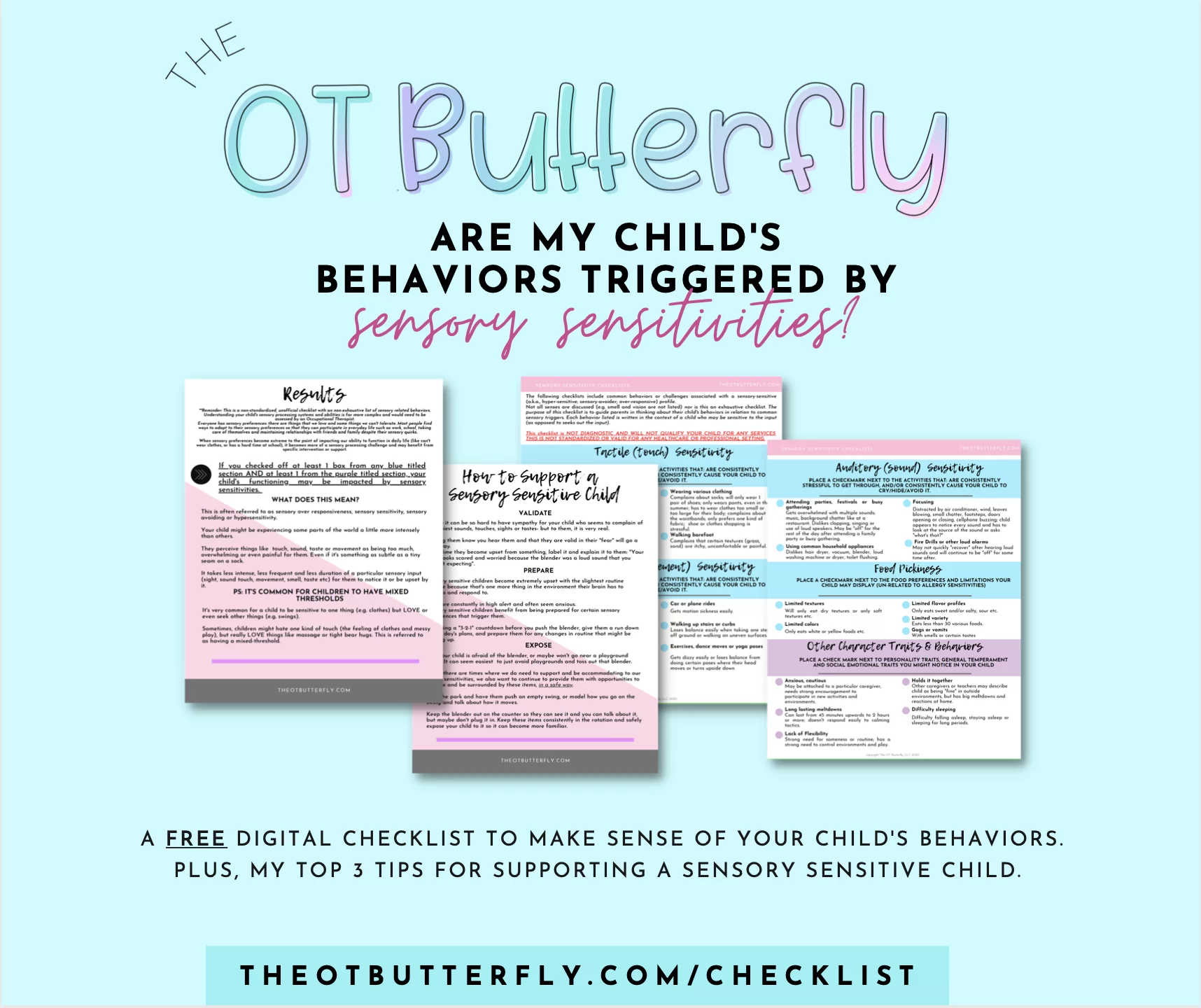
Free: Sensory Sensitive Checklist
Use this quick and easy checklist to see if your child may have some sensory sensitivities and my top 3 tips for supporting them.
Episode Links
instagram: @TheOTButterfly / www.instagram.com/theotbutterfly
Website/blog: www.theotbutterfly.com
Email: LauraPetix@TheOTButterfly.com
Work with me: www.theotbutterfly.com/parentconsult
More SPD parent resources: www.sensorywisesolutions.com


